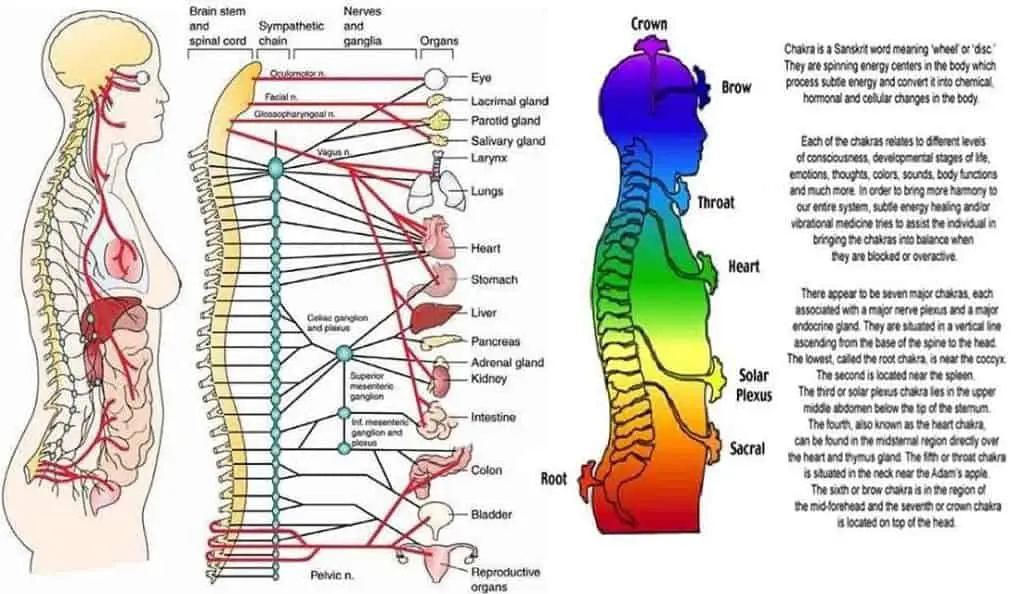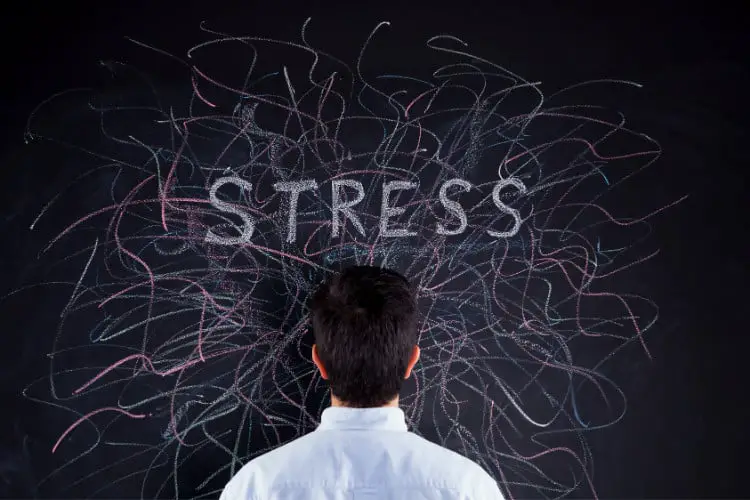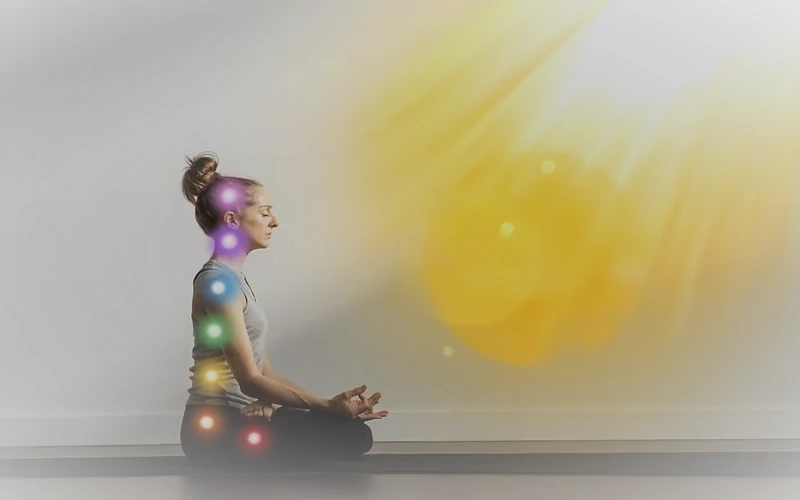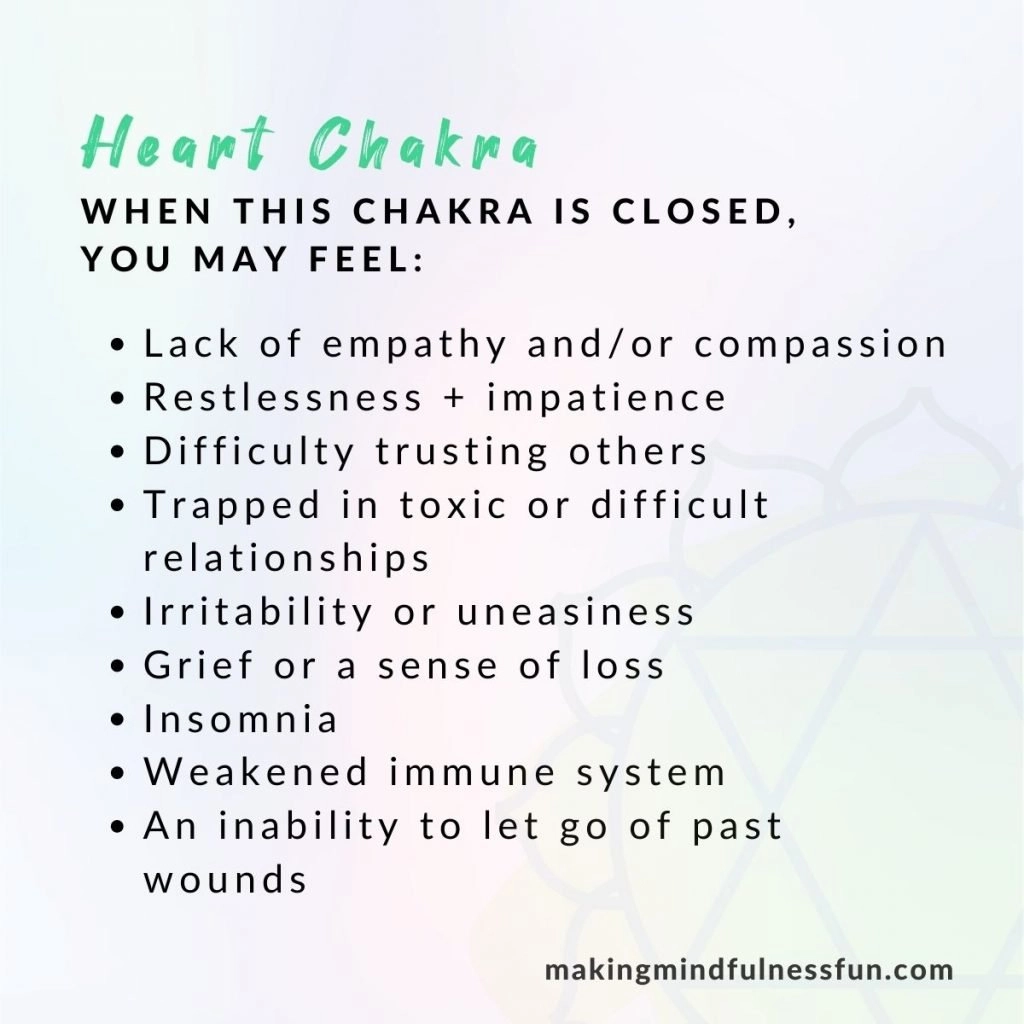Optimum well-being means experiencing health and balance on a physical, mental, and ENERGETIC level.
While we all know how to improve our physical and mental health, many of us are unaware of how our energetic being (or subtle body) operates. Where do we get our daily “energy” from?
The ancient yogic teachings of the chakra system can help us understand how the condition of our energetic bodies determines our overall happiness and well-being. Do you get tired easily ?
In this article, we’re exploring what both century-old wisdom and modern-day science say about chakra energy flow. I’ll break it down in the most easy-to-understand way, with typical symptoms of blockages in each chakra and practical ways to balance and strengthen your spiritual energy.
So, make your favorite herbal tea, light a candle, and let’s get started.
How Chakras Work: A Scientific Explanation

The chakra system is not a new theory by any means. It was first mentioned in the Vedas, an ancient Hindu text compiled around 1,500 BC. “Chakra” is a Sanskrit word meaning “wheel” or “disc,” as they are spinning vortexes of energy that extend up the spinal column and into the brain.
Chakras are understood to be energy distribution centers within us that can alter the flow of information in our bodies and brains.
Let’s take a deeper look at how they work and how they affect us, according to science.
Chakras & Energy Flow
Our chakras are part of our subtle body, responsible for keeping our internal energy and emotions balanced. A balanced chakra system promotes overall well-being. However, chakra imbalances hinder or stall the flow of internal positive energy and can produce physical, mental, or emotional dis-ease.
Like electricity, you can’t physically see the energy within your body or the chakra centers. It’s also important to note that the chakras are not physical organs. Still, early research has linked each chakra with specific organs and bodily functions, similar to meridians from Traditional Chinese Medicine.
Even so, psychologist Richard Maxwell who has years of experience studying conceptual frameworks of psychology and neuroscience in spirituality, believes chakras cannot be solely associated with the physical body. Instead, in his 2009 paper, he describes chakras as junctions in our energetic roadmap that send messages through ions, molecules, and electrical impulses.
Scientific Correlations: Chakras, Endocrine System, and Nervous System
Modern science has discovered connections between the seven main chakras and our internal bodily systems.
In 2018, Dr. Amit Ray, with expertise in artificial intelligence and computational neuroscience, published a book identifying 114 chakras. These were further classified into 7 major, 21 minor, and 86 micro chakras. In his book, he states that the chakras are responsible for all human emotions, behaviors, and inner experiences.
Dr. N.J Cooper of Technische Universität München reviewed Dr. Ray’s work more scientifically using various neuro-imaging tools. These studies found that chakras are deeply connected to multiple aspects of human psychology and are located in hormonal and neurotransmitter pathways.
Specifically, by mapping the endocrine and nervous systems, researchers found that chakras directly relate to glands in the endocrine system and nerve clusters in the central nervous system.
Going deeper, each chakra has associations with a specific body part. The condition of that chakra links to the functioning and health of that body part, along with mental and emotional implications.
What Is A Blocked Chakra?
A blocked chakra is when the energy within one of these vortexes slows or stops flowing. The energy flow could stop altogether, or it could just slow down. This can happen for several reasons, which we will discuss in the next section. However, on an energetic level, a blockage occurs when negative energy (emotions, thoughts, or toxins) is not released from the body.
When the energy in a chakra becomes blocked, physical, mental, or emotional imbalances occur. These can manifest as psychological symptoms, such as anxiety, stress, or fatigue, or as physical pain or diseases like headaches, indigestion, and colon problems.
Why Do Chakras Get Blocked?

Dr. Nader Butto is a cardiologist and therapist known for creating the unified integrative medicine method that fully integrates conventional and alternative medicine. In 2019, he wrote a research paper on ‘Psychological Conflict and Physical Illness,’ reporting what strengthens and weakens our chakras.
In the paper, he explains that positive emotions stimulate energy in the chakras and nourish them, while psychological conflict blocks the energy flow of the chakra’s corresponding gland.
He also stated that chronic stress, traumatic events, and unfavorable environmental conditions can weaken chakras and trigger disease.
Considering this, here are some common ways your chakras could get blocked:
| Reason for Blockage | Description |
|---|---|
| Emotional trauma or stress | Intense or prolonged emotional experiences can disrupt chakra balance. |
| Physical trauma or injury | Physical injuries, accidents, or illnesses can affect energy flow. |
| Unhealthy lifestyle | Poor nutrition, sedentary lifestyle, and harmful habits impact chakras. |
| Negative thought patterns | Persistent negative thoughts, self-criticism, or limiting beliefs disrupt energy flow. |
| Suppressed emotions | Repressed emotions or unresolved emotional issues create blockages. |
| Environmental factors | Exposure to environmental toxins, pollution, or electromagnetic radiation affects chakras. |
| Lack of self-care | Neglecting self-care practices, neglecting personal needs, and ignoring self-healing contributes to imbalances. |
| Imbalance in relationships | Dysfunctional or unhealthy relationships, codependency, or lack of boundaries impact chakras. |
| Spiritual disconnect | Lack of spiritual connection, absence of meaningful practices, or disconnection from inner self result in blockages. |
| Lack of energy flow | Insufficient energy flow due to lack of regular meditation, energy healing practices, or stagnant lifestyle leads to imbalances. |
What Does A Blocked Chakra Feel Like?

As each energy center relates to a different organ or body function, the signs of imbalance will differ. So to understand what a blocked chakra feels like, we must learn more about the role of each of the seven major chakras.
- Root chakra – Located at the base of the spine, the first chakra connects to our core needs and feelings of safety, security, and stability. It is associated with the skeletal structure, the elimination organs, and the lower body (feet and legs).
- Sacral chakra – Situated in the lower belly, the second chakra is responsible for emotional balance and feelings of passion, sensuality, and sexuality. It associates with the reproductive organs and the lower back.
- Solar Plexus chakra – Located in the upper abdomen, the third chakra determines our self-image and self-esteem, promoting motivation, discipline, and determination. It links to the digestive organs, including the stomach, gallbladder, spleen, and liver.
- Heart chakra – Located in the center of the chest, the fourth chakra deals with matters of the heart, including our ability to give and receive love and feel compassion and empathy. It is associated with the physical heart, lungs, arms, and hands.
- Throat chakra – Situated in the center of the throat, the fifth chakra is our center of communication and expression. It is associated with the neck, mouth, tongue, vocal cords, and thyroid gland.
- Third Eye chakra – Located in the forehead (between the eyebrows), the sixth chakra governs our vision, intuition, and imagination. It is associated with the eyes, ears, nose, brain, and nervous system. It is also closely linked to the pineal gland, which regulates your body’s circadian rhythm.
- Crown chakra – The seventh chakra is the only one of the seven main chakras located off the physical body, just above the top of the head. It governs our spiritual connection and is associated with the brain, particularly the hypothalamus. It is also connected to the pituitary gland, which regulates many physiological processes, including stress response.
Symptoms and Effects of a Blocked or Unbalanced Chakra
Let’s look deeper into each chakra, uncovering what commonly blocks it and the signs to look out for.
Blocked Root Chakra
As the root chakra relates to our core needs and feelings of security and stability, significant life changes can block it. Examples include moving home, family breakdown, or close relatives passing away. Traumatic events that trigger fear and make you feel unsafe, such as house burglary, mugging, or abuse, can also create a root chakra blockage.
- Physical symptoms – Sluggishness and fatigue, colon issues like chronic diarrhea or constipation, bladder issues, unexplained aches and pains in the legs or feet.
- Psychological signs – Fear, anxiety, restlessness, feeling unsafe in the world, panic attacks, overthinking, depression, nightmares, feeling emotionally disconnected or disconnected from your body.
Blocked Sacral Chakra
Sacral chakra blockages commonly occur due to sexual abuse or negative sexual experiences, financial worries, addictions, or suppressed emotions. This chakra can also become blocked if you live a life lacking purpose or pleasure.
- Physical symptoms – Reproductive issues, sexual dysfunction, chronic low back pain, urinary problems, kidney dysfunction, low energy, hip problems, or tight hips.
- Psychological signs – Low sex drive or unhealthy/uncontrollable sexual urges, mood swings, creative blocks, addictive tendencies, a general dissatisfaction or lack of passion in life.
Blocked Solar Plexus Chakra
Solar plexus chakra blockages typically relate to childhood trauma abuse but can also happen when our self-esteem takes a hit during adulthood. Common causes are bullying, narcissistic behaviors from parents or partners, or excessive criticism from colleagues.
- Physical symptoms – Indigestion, irritable bowel syndrome, eating disorders, excessive weight gain, diabetes, stomach ulcers, chronic fatigue.
- Psychological signs – Low self-esteem, lack of self-acceptance, lack of confidence, procrastination, tendency to give up easily, feeling like a victim, imposter syndrome, fear of trying new things, pessimistic attitude.
Blocked Heart Chakra
The heart chakra can become blocked due to heartbreak, such as relationship breakups, divorce, or grief. It can also stem from emotional upheaval from childhood, abandonment issues, abuse, and negative experiences in friendships or relationships.
Typically, when someone hurts us or breaks our trust somehow, we close our hearts, which stops the flow of energy in this chakra.
- Physical symptoms – Heartburn, poor circulation, respiratory issues, chest pain, chronic upper back pain, arthritis in the hands, and unexplained pain in the arms.
- Psychological signs – Inability to trust others, anger or resentment, problems connecting and making friends, the tendency to see or expect the worst in people, lack of compassion or empathy, appearing cold, aloof or closed off, poor boundaries, a string or unhealthy relationships.
Blocked Throat Chakra
We experience a throat chakra blockage when something happens that stifles our ability to express ourselves. This could be public humiliation, judgment from others, bullying, or suppressed feelings around self-worth.
- Physical symptoms – Chronic sore throat, thyroid issues, neck pain, dental issues, mouth ulcers.
- Psychological signs – Fear around public speaking or having difficult situations, general trouble communicating with others, inability to express your thoughts or find the right words, shyness, social anxiety, creative blocks, speaking over others or responding without listening first.
Blocked Third Eye Chakra
Being disconnected from nature or lacking any spiritual connection are two common causes of a third eye chakra blockage. People with a blocked third eye chakra typically have a closed mindset and have not done any personal or spiritual development work.
- Physical symptoms – Frequent headaches, insomnia or other sleep disorders, and eye problems such as blurred vision or light sensitivity.
- Psychological signs – Lack of self-awareness, dismissive of others’ beliefs, unwillingness to listen to other perspectives, indecisiveness, overthinking, a strong need for external validation, lack of focus, inability to “read” a situation or feel a “gut instinct.”
Blocked Crown Chakra
The crown chakra typically remains blocked until a person embarks on a spiritual path and starts to gain self-awareness. People solely focused on the material world, disconnected from nature, and dismissive or uninterested in spirituality will likely have a blocked crown chakra.
However, high-stress levels and a fast-paced lifestyle can close a previously open crown chakra.
- Physical symptoms – Chronic fatigue, headaches, migraines, poor coordination, sensitivity to light and sound, insomnia.
- Psychological signs – Dissociation from the body, complete dismissal of spirituality, depression, anxiety, other mental health disorders including psychosis, lack of direction, inability to set or maintain goals.
How To Identify & Unblock or Rebalance a Chakra
Now you know the common causes and symptoms of a blocked chakra, let’s look at how to identify blockages and rebalance the energy to bring your body, mind, and spirit back to optimal well-being.
1. Tune Into Your Emotions & Physical Sensations
As we cannot see the energy within us, we can only fully understand and benefit from the chakra system by cultivating deep self-awareness. By regularly checking in with ourselves, we discover which chakra needs some attention to.
Action Steps: How to Tune Into Your Emotional State
- Cultivate self-awareness: Develop a deep understanding of the chakra system by regularly checking in with yourself and observing the state of your body, mind, and emotions.
- Morning and evening stillness: Set aside a few minutes in the morning and evening to sit in stillness. Pay attention to any physical sensations, aches, or pains in your body.
- Observe the state of your mind: Notice whether your mind is busy or calm. Take note of the types of thoughts you are having, whether they are positive, negative, or repetitive.
- Connect with your heart center: Bring your awareness to your heart center and observe any feelings that arise within you. Label these emotions without judgment or creating stories around them. Simply observe.
- Journal your observations: After each session, write down the emotions, thoughts, and physical sensations you witnessed. Create a journal to track patterns and common symptoms you experience.
- Use the chakra symptoms list: Refer to the chakra symptoms list provided above to identify which chakra may have blockages based on your observations.
By following these steps, you can develop a deeper understanding of your chakra system, identify areas that need attention, and work towards restoring balance and harmony within your energy centers.
2. Chakra Visualisation Meditation
We can use meditation for targeted chakra healing or to balance the entire system. Chakra meditation includes one or more of the following techniques:
- Color imagery/visualization of chakra energy in the body
- Chanting mantras or speaking affirmations related to the energy/qualities of the chakra
- Holding mudras (hand gestures)
- Listening to music tuned to the frequency of each chakra
You can find various guided chakra meditations on Youtube, targeting each chakra. For example, this is a powerful root chakra meditation, and here is one of my favorites for unblocking the heart chakra.
If you have multiple blocked chakras, try a guided meditation for the entire chakra system. This involves visualizing energy at the root chakra and slowly moving your awareness up the spine, pausing for a few minutes at each chakra.
As you focus on each energy center, visualize the presence of energy there in the color associated with the chakra:
- Root = Red
- Sacral = Orange
- Solar Plexus = Yellow
- Heart = Green
- Throat = Blue
- Third eye = Indigo
- Crown = Purple or white
Along with seeing the chakra color in your mind’s eye, try to feel the qualities of each one. For example, when focusing on the solar plexus chakra, try your best to feel the energy of confidence, courage, and determination rising within you.
Once you finish at the crown chakra, slowly move your awareness back down the spine to draw the energy back through the chakra system.
3. Yoga for Chakra Rebalancing
According to Anodea Judith, who has studied the chakras for over 40 years and wrote the book ‘Chakra Yoga,’ practicing specific yoga poses can balance and unblock the energy centers. Here’s a brief overview of the best yoga poses for each chakra based on her interpretation of ancient yogic teachings.
Root Chakra Yoga Poses
Practice strong, grounding standing poses that have a focus on connecting your feet to the earth, like:
- Mountain pose (Tadasana)
- Tree pose
- Warrior poses
- Yogic squat (Malasana)
Seated poses that root the sitting bones to the earth or lower the head to the ground can also benefit the first chakra, such as the butterfly pose and seated forward fold.
Sacral Chakra Yoga Poses
As the sacral chakra is associated with the hip and pelvic region, hip opening poses are best for this energy center, such as:
- Pigeon pose
- Lizard pose
- Butterfly pose
- Low lunge
Solar Plexus Chakra Yoga Poses
Poses that engage or stretch the core muscles stimulate the solar plexus chakra, including twists, core work, and prone postures.
- Boat pose
- Seated twist
- Locust pose
- Plank pose
Heart Chakra Yoga Poses
Yoga poses that stretch and open the chest, such as backbends, can unblock the energetic heart.
- Camel pose
- Dancer’s pose
- Bridge pose
- Heart opening pose (Anahata)
Throat Chakra Yoga Poses
Neck stretches and postures that stretch or compress the throat will stimulate energy flow in the fifth chakra.
- Neck rolls
- Fish pose
- Shoulderstand
- Cat/Cow Pose
Third Eye Chakra Yoga Poses
Introspective yoga poses and those that lower the head to the ground can increase the life force in the third eye chakra.
- Child’s pose
- Standing forward fold
- Hero’s Pose
- Plow Pose
Crown Chakra Yoga Poses
Savasana is the best yoga pose for opening the crown chakra, as it promotes increased self-awareness and connection to the divine. Moreover, poses that connect the top of the head to the ground, such as the headstand and rabbit pose, can activate the seventh chakra.
Final Thoughts
When our chakras are open, balanced, and aligned, we enjoy optimum physical, mental, and emotional well-being. However, if one of our chakras is blocked, we can experience negative thoughts, unpleasant emotions, or physical disease. Therefore, identifying and rebalancing a chakra blockage can be an incredible tool for healing, health, and happiness.
Loved what you read?
Hit that share button and let the world in on the secret – we’d be thrilled!
Got thoughts? We’re all ears for your feedback, corrections, or a good old chat. Don’t be shy; drop us a line.
And hey, don’t miss out on our curated list of must-reads in the recommended books section.
Big thanks for diving in with us today!



